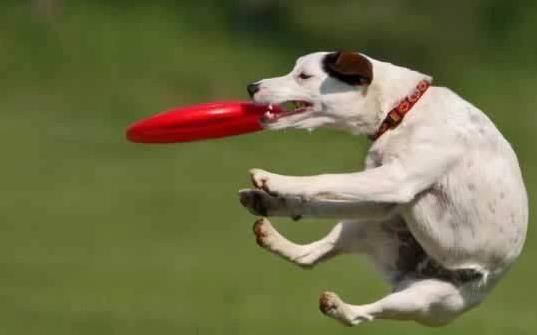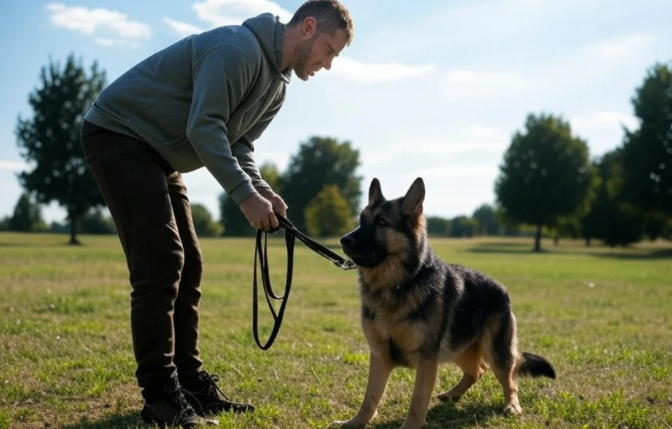The Complete Guide for New Dog Owners: Smart Dog Care Starts Here

I. Choosing the Right Dog Food: Expensive Doesn’t Always Mean Better
Basic Principles for Selecting Dog Food:
- Focus on the Formula, Not the Price
Dr. Wang, a pet nutritionist with a decade of experience, explains, “Many new owners assume that the more expensive the dog food, the better it is. In reality, you need to pay attention to the ingredients and nutritional makeup.” When shopping for dog food, keep these points in mind:- Protein Source: Look for specific meat ingredients (like chicken, beef, or fish) rather than vague terms such as “meat meal” or “animal by-products.”
- Ingredient Order: The top five ingredients should include at least two different sources of meat protein.
- Avoid Additives: Steer clear of products that contain artificial colors, flavors, and preservatives.
- Tailored Formulas: Choose food formulated for your dog’s age, size, and health needs.
- A Proper Transition is Essential
Many new owners don’t realize that a dog’s digestive system is very sensitive to sudden changes in diet. Ms. Zhang once experienced a severe bout of diarrhea in her Teddy after abruptly switching foods.- Transition Tips: Gradually mix the new food with the old over 7–10 days—start with 90% old food and 10% new food on day one, and slowly adjust the ratio until the switch is complete.
Ms. Zhang now champions proper dietary transitions in the dog community.
- Transition Tips: Gradually mix the new food with the old over 7–10 days—start with 90% old food and 10% new food on day one, and slowly adjust the ratio until the switch is complete.
- Dry, Wet, or Homemade?
- Dry Food: Convenient to store, helps keep teeth clean, and works well for most healthy adult dogs.
- Wet Food: More palatable and hydrating; ideal for picky eaters, older dogs, or those with health issues.
- Homemade Diets: Offer control over ingredients but require careful balance of nutrients—consult a pet nutritionist to ensure your recipe meets all of your dog’s dietary needs.

II. Daily Care: The Little Things Make a Big Difference
Grooming: It’s More Than Just Looking Good
- Different Breeds, Different Needs
- Short-Haired Dogs (e.g., Labrador): Brush 1–2 times per week to reduce shedding and dander.
- Long-Haired Dogs (e.g., Golden Retriever): Brush every 2–3 days to prevent tangles.
- Curly-Haired Dogs (e.g., Poodle): Regular professional grooming is a must, with routine at-home brushing to keep their coat manageable.
- Bathing Frequency: The Science of Clean
While many believe that dogs should be bathed frequently, over-bathing can actually damage their protective skin barrier. As a general rule:- Short-Haired Dogs: Bathe every 1–2 months.
- Long-Haired Dogs: Bathe every 3–4 weeks.
- Special Circumstances (e.g., skin conditions): Follow your vet’s advice.
Dental Care: A Commonly Overlooked Health Hazard
“Over 80% of three-year-old dogs show signs of periodontal disease—one of the most common yet overlooked health issues,” says Dr. Li.
Tips for Dental Health:
- Start Early: Begin brushing your dog’s teeth when they’re still a puppy, using toothpaste made specifically for dogs (human toothpaste can be toxic to them).
- Chewing Aids: Provide dental chews or toys designed to help clean their teeth.
- Regular Check-Ups: Have your vet examine your dog’s teeth regularly, so any problems can be addressed promptly.
Ms. Chen’s Bichon Frise, “Dou Dou,” had to have four teeth extracted at the age of five due to periodontal disease. “If I’d known how important dental care was, Dou Dou wouldn’t have had to suffer,” she laments. Now, she diligently brushes his teeth every day.

III. Behavior Training: Start from Day One
Housetraining: Patience Is Key
When puppies first arrive in a new home, they often don’t know where to go for bathroom breaks. Effective housetraining involves:
- Establishing a Routine: Regularly take your dog to a designated spot.
- Positive Reinforcement: Immediately praise and reward your dog when they go in the right place.
- Handling Accidents: If an accident happens indoors, avoid punishment; instead, clean up with an enzymatic cleaner to remove odors.
- Observing Signals: Dogs often show specific behaviors (like circling or sniffing around) before they need to go.
“Accidents are inevitable during training,” says dog trainer Mr. Wang. “The key is to be consistent and use positive reinforcement rather than punishment.”
Separation Anxiety: Prevention Is Better Than Cure
Many new owners notice that as soon as they leave, their dog starts barking excessively, damaging furniture, or even pacing in circles—classic signs of separation anxiety.
Mr. Deng’s Corgi, “Biscuit,” once chewed through an entire set of furniture while he was at work. He managed to curb the behavior with a gradual training method:
- Step-by-Step Approach: Begin by leaving your dog alone for just a few minutes, then gradually extend the duration.
- Comfort Items: Leave behind an item that smells like you, such as a T-shirt, along with some engaging toys.
Now, Biscuit is calm even during Mr. Deng’s eight-hour workday.
Additional Tips:
- Start training early in your dog’s life.
- Avoid making a big fuss when leaving or returning home.
- Provide plenty of safe, engaging toys.
- In severe cases, consider consulting a professional behaviorist.

IV. Health Management: Prevention First, Regular Check-ups
Vaccinations and Deworming: The Basics
“Every year, countless dogs lose their lives to preventable diseases—tragedies that proper vaccination schedules could easily avert,” laments Dr. Zhang. New dog owners should ensure:
- Core Vaccines: Timely shots for distemper, parvovirus, infectious hepatitis, and rabies are essential.
- Regular Deworming: Both internal and external parasites need to be controlled, especially in puppies and dogs that frequently go outdoors.
- Health Records: Keep a complete file of vaccination dates, deworming treatments, and health check-up reports.
Ms. Wu once delayed her puppy’s vaccinations, leading to a severe case of canine distemper. After a long, painful recovery, she now sets three reminders on her phone to never miss another appointment.
Observing Health: You Know Your Dog Best
As the person who spends the most time with your dog, you’re in the best position to notice any changes. Keep an eye out for:
- Changes in Appetite: Sudden loss of interest or overeating.
- Water Intake: Noticeable increases or decreases.
- Energy Levels: Unusual excitement or lethargy.
- Elimination Habits: Diarrhea, constipation, or changes in urine color.
- Behavioral Shifts: A usually energetic dog becoming quiet, or a typically docile pet turning irritable.
“Dogs can’t talk, but their behavior speaks volumes about their health,” advises many veterinarians. Keeping a daily log of your dog’s normal behavior can help you spot any early signs of trouble.

Growing Together: The Joyful Journey of Pet Parenting
While the early days of dog ownership can be challenging, most owners agree that the experience enriches their lives in ways they never imagined. As Mr. Li puts it, “Oreo taught me patience and responsibility—lessons that have even improved my work and relationships.”
Owning a dog isn’t just about caring for another life; it’s a journey of growth together. Those chewed-up shoes, late-night comfort sessions, and early morning walks become treasured memories. “A dog’s life may only be a chapter in our own story, but to them, we are their entire world.”
This encapsulates the true meaning of pet ownership: you’re not just raising a dog, you’re nurturing a relationship and learning how to love and be loved even better. Whether you’re a brand-new dog parent or a seasoned pro on the pet care journey, I hope this guide helps you navigate the path ahead. Remember, there’s no such thing as a perfect pet parent—only a loving owner who’s always willing to learn and adapt. Your love and patience are the greatest gifts you can give your furry friend.
In the words of a veteran dog owner: “Throughout the ups and downs of raising a dog, we make mistakes and face setbacks—but every morning, when those trusting eyes look at you, you know it’s all worth it.”





